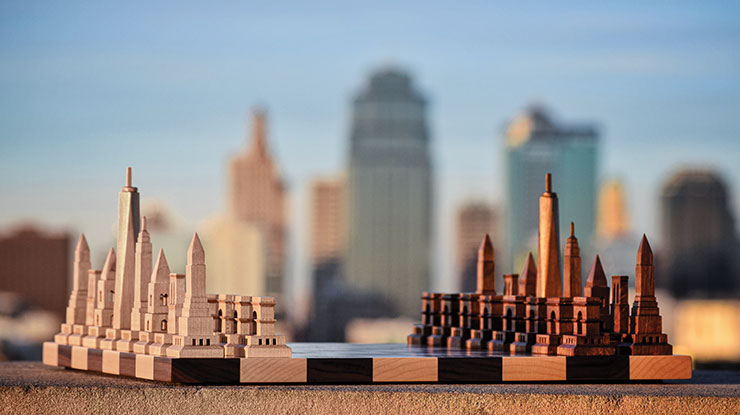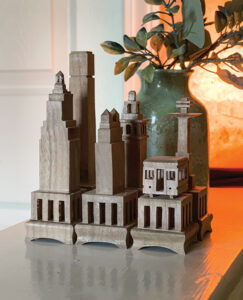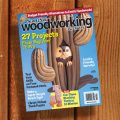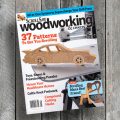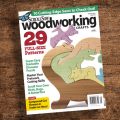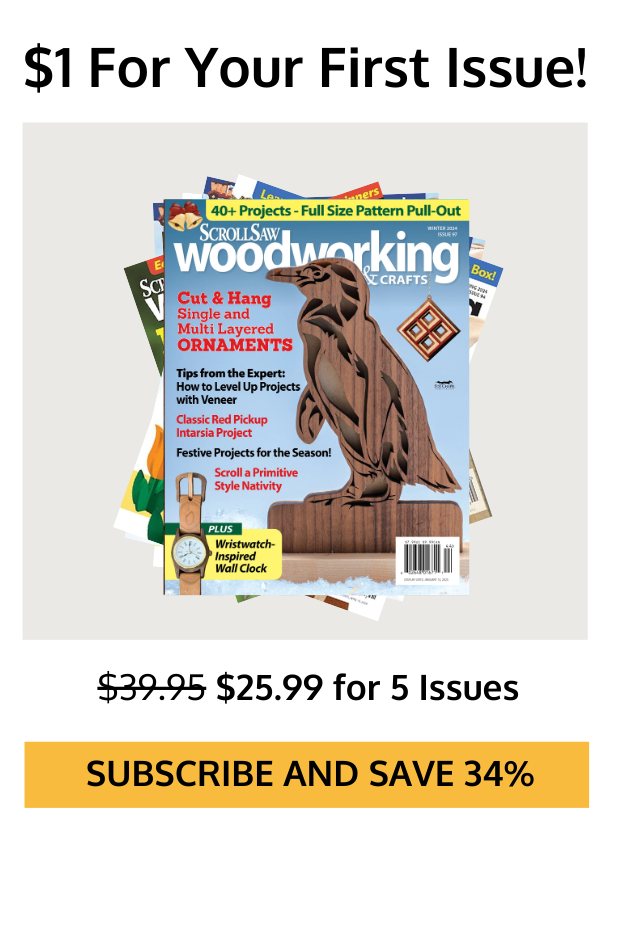Multiple interests led to one big hobby for this builder of tiny cityscapes
By Dorissa Bolinski
One look at the Gothic spires, brutalist buildings, and craggy urban silhouettes that cover David Pentimone’s social media pages makes it clear he has a passion for architecture. Although not an engineer, David is a builder on a small scale. For the past few years, he has been using his scroll saw to create chess sets featuring landmark structures from various cities.
|
David received his first scroll saw as a boy just as he was discovering an appreciation of chess. Later, he became intrigued by architecture and started photographing the buildings around his hometown “Making an architecturally themed wooden chess set was a perfect way to combine my interests in woodworking, chess, and architecture,” says the 23-year-old warehouse training manager. |
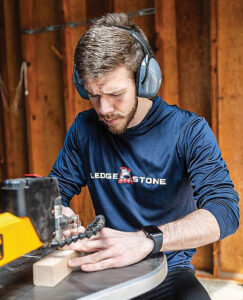 |
Early in his scroll saw hobby, David devoured free patterns on the internet and soon sought more challenging projects. His search led to the local library, where he found a book with designs for compound cut chess sets, many of which were modeled after cities.
“I was instantly hooked on the idea of compound cutting, which allows for accurate replication of each chess piece and a surprising amount of intricacy,”
he says.
Using the book’s patterns, David completed chess sets depicting ancient Rome and San Francisco. These inspired him to design a set from scratch featuring the landmarks he loved from Kansas City. His original plan was derailed when an enthusiastic New York colleague asked him to create a set showcasing iconic Manhattan buildings.
After he and his colleague discussed which buildings to include, David embarked on a nine-month learning process that yielded his first originally designed chess set. Then it was back to Kansas City.
David’s process for building a city chess set involves a series of steps: drawing the patterns for each piece, testing their soundness on the scroll saw, refining the patterns, and then cutting and finishing. Testing and refining the patterns requires the most time since each piece takes David around 45 minutes to cut. If a piece does not emerge to his standards, it’s back to the drawing board for edits.
Despite the time sink, he says, “It’s rewarding as the pieces emerge from the wood and a skyline
begins to take shape.”
Most of the chess pieces David makes are 1″ to 1-1/2″ (2.5 to 3.8cm) wide and 2″ to 2-1/2″ (2.5 to 3.8cm) high; the kings, though, often clear 7″ (17.7cm). For his Kansas City set, the king is the Power and Light building, while the queen is the World War One Memorial. The bishops are 909 Walnut Street and the knights are the Sky Stations of Bartle Hall. Streetcar pawns stand guard in front. Certain characteristics make some structures more suitable for a game, and he says it’s a balance to design a workable pattern that also maintains a building’s distinguishing characteristics.
|
“A building with a straightforward silhouette and four distinct sides will generally work well, whereas a building with an octagonal shape would be difficult to make recognizable with compound cutting,” he explains. David uses walnut, cherry, or maple for his pieces and finishes them with Danish oil for a soft luster that brings out the grain. Some woods haven’t worked as well: “Padauk splinters easily and is extremely dense, while other woods, such as cambia, are too light and susceptible to breakage.” |
Detail of the Giralda Tower. |
Although David loved compound scrolling from the start, he knows there’s a learning curve for beginners. His advice is to start slowly and experiment with different blades. He explains that a blade with aggressive teeth will cut through dense wood and stay on the pattern more easily. Blades with many teeth (higher TPI) may become bogged down, while blades with fewer teeth (lower TPI) could cut too aggressively. For compound cutting especially, proper tension is also crucial for making straight, accurate cuts without unnecessary wear on the blade.
|
“At the very least,” he says, “compound cutting is a great thing to try just for the experience of doing a project that’s different than what you might be used to on the scroll saw.” These days, a busy work schedule keeps David away from his workshop more than he’d like, but his ode to Kansas City is just about finished. Next on his itinerary is a chess set for either Chicago or London. As a hobbyist scroller, he sees no need to rush his labor of love. In this case, the journey is just as enjoyable as the destination. |
Kansas City chess pieces are ready for a game. |
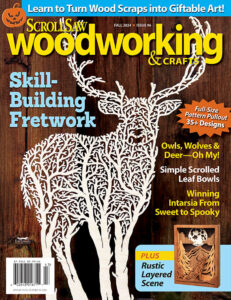 |
Purchase our latest issue!
Click for Summer Issue
For more articles like these, subscribe to Scroll Saw Woodworking & Crafts magazine. SubscribePlus! Get mini magazines in your e-mail between printed issues with Short Cuts, our e-mail newsletter. Subscribe to Short Cuts |


